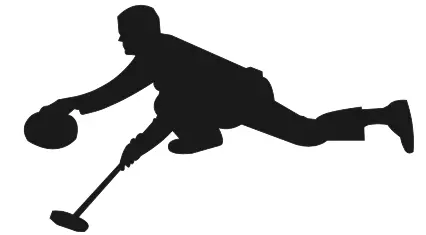draw weight
What Is The Definition Of Draw Weight In Curling?
1. The draw weight is the degree of force needed in the throw for the stone to rest in the position desired (most commonly, the house). The draw weight can vary greatly based on the objective and desired resting place for the shot.
 Some draw weights will be heavier in order to hit opposing stones, while other throws’ draw weights may be lighter due to setting up a guard.
Some draw weights will be heavier in order to hit opposing stones, while other throws’ draw weights may be lighter due to setting up a guard.
What Are The Outcomes Of Different Draw Weights?
There are five main placements for shots depending on draw weight.
- Guard: A guard stops between the far hog-line and front of house in the free guard zone.
- Draw: A draw stops at or on the tee line. This includes normal throws to the house.
- Back: A back rests on or at the backline before the back of the house.
- Hack: A hack stops at the far hack in the back of the house.
- Board: A board comes to rest deep in the back of the house, 4 to 6 feet beyond the far hack.
Additionally, three main types of hits are also delineated by their draw weights.
- Control: Sometimes called a “quiet” hit, this type of throw aims to move just fast enough to knock a stone out of play but still slow enough to allow sweepers to maneuver the stone’s curl if needed. This shot might also allow for the hitting stone to stay in play while removing the intended target from its position.
- Takeout/Hit: A takeout or hit is the most common type of hit. When trying to remove a stone from play, curlers will throw takeouts with more draw weight than a controlled hit. This type of throw is not adjusted much after it’s thrown due to its velocity.
- Peel: A peel is a very hard throw intended to decisively clear out stones. It is the ideal type of throw to remove multiple stones from play. With so much draw weight, the sweepers will often not sweep on this throw.
How Do You Judge Weight In Curling?
The draw weight depends on the force used in throwing the stone. To determine how much force should be enacted in a throw, you must get used to knowing the outcomes of different types of weight. Practice is essential to master weight judgment.
Additionally, sweeping can extend a throw by as much as 8 feet. Keeping this in mind, in most circumstances it might be better to be too light than too heavy.
Example Of How Draw Weight Is Used In Commentary
1. Jennifer Jones calls for a control hit to Sweden’s stone on the 4-foot ring, but Jocelyn Peterman’s draw weight is too heavy, causing the thrown stone to slide out of the house.
Sport The Term Is Used
1. Curling